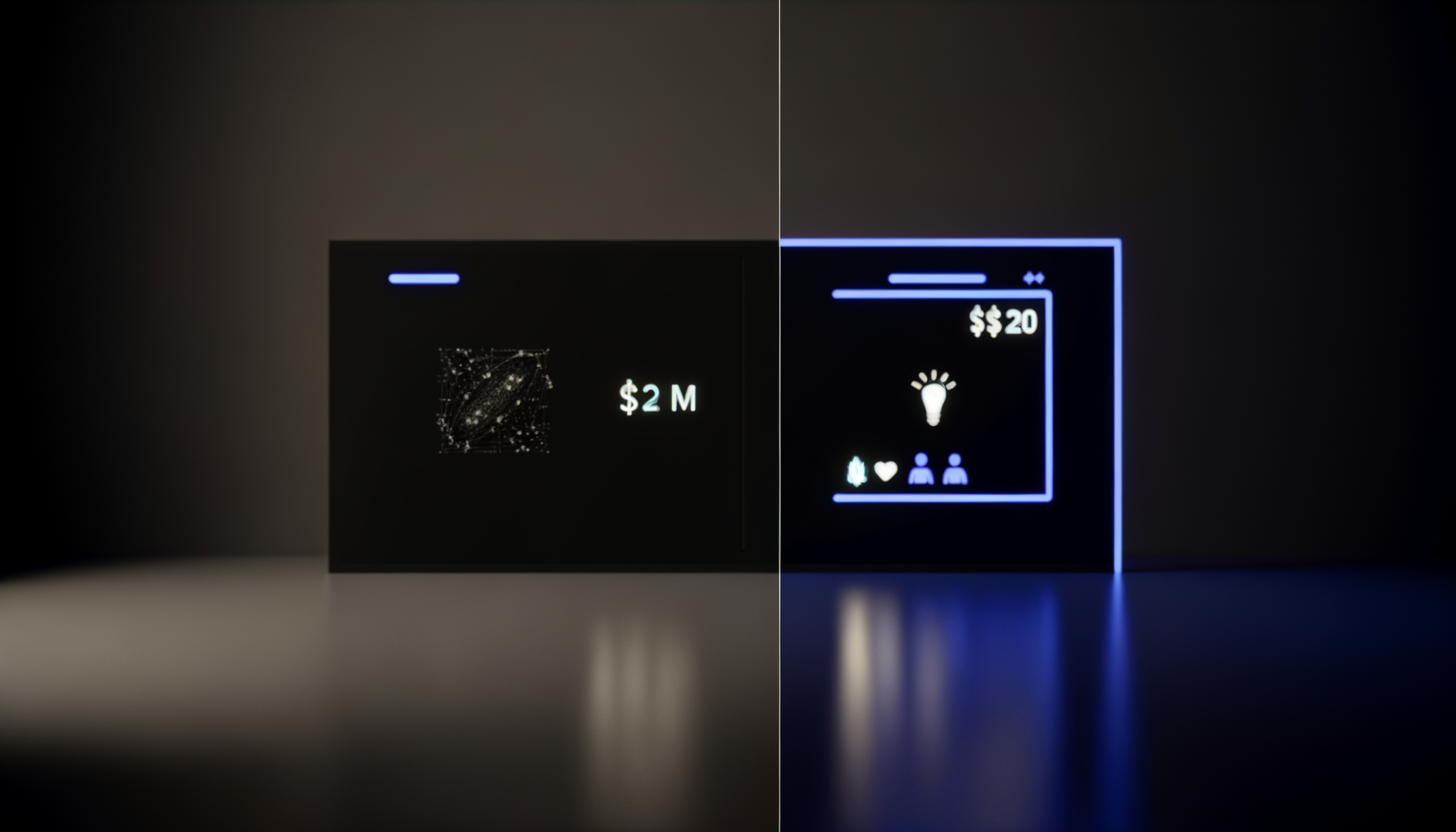OpenAI just announced their charitable August 2025 gift to humanity—except it’s actually a precision-guided missile aimed at every AI startup that dared to compete with them.
The Trojan Horse of Open-Weight AI
OpenAI’s announcement of their first open-weight model release since GPT-2, scheduled for August 2025, arrives at a suspiciously perfect moment. Just as GPT-5 integrates their o3 reasoning capabilities into a premium offering, they’re simultaneously dumping last-generation technology into the open market. This isn’t generosity—it’s strategic market manipulation at its finest.
When a trillion-dollar company suddenly embraces “openness,” the real question isn’t what they’re giving away—it’s what they’re protecting.
The timing reveals everything. August 2025 sits precisely at the intersection of several critical market dynamics: enterprise AI budgets for 2026 are being allocated, infrastructure decisions are being made, and thousands of bootstrap AI startups are fighting for survival with their differentiated model architectures. OpenAI’s move will vaporize their competitive advantages overnight.
The Mathematical Reality of Model Commoditization
Let me break down the economics that OpenAI understands perfectly well. Current bootstrap AI startups operate on a razor-thin margin stack:
- Infrastructure costs: 40-60% of revenue
- Model training amortization: 20-30%
- Engineering talent: 15-25%
- Customer acquisition: 10-15%
- Actual profit margin: -5% to 10%
These startups justify their existence through specialized models that outperform GPT-4 in narrow domains. They’ve spent millions training domain-specific architectures, fine-tuning for vertical applications, and building moats around proprietary datasets. Their entire value proposition rests on being 10-20% better than OpenAI at specific tasks.
The Commoditization Cascade
When OpenAI releases GPT-4.5-equivalent weights in August 2025, here’s what happens:
- Day 1-7: Every major cloud provider integrates the weights into their managed services
- Week 2-4: Open-source community creates fine-tuning pipelines that match specialized commercial models
- Month 2-3: Enterprise customers question why they’re paying premiums for marginal improvements
- Month 4-6: Bootstrap AI startups see 60-80% revenue erosion
- Month 7-12: Mass consolidation as startups sell IP portfolios for pennies on the dollar
This isn’t speculation—it’s the exact playbook we saw with computer vision models post-2018 and NLP models post-2020. The difference now is the speed and scale of destruction.
The Premium Lock-In Strategy
While everyone celebrates free models, OpenAI’s real game unfolds in the enterprise tier. GPT-5 with integrated o3 reasoning won’t just be an incremental improvement—it will be architecturally incompatible with the open-weight release. Key capabilities will include:
- Multi-step reasoning chains that require proprietary orchestration
- Cross-modal synthesis leveraging training data unavailable to open models
- Enterprise-grade reliability through infrastructure only OpenAI can provide
- Compliance frameworks that make switching costs prohibitive
The strategic brilliance lies in the timing. Enterprises evaluating AI platforms in Q3 2025 will see two options: build on “free” open weights that everyone has access to, or pay for GPT-5’s exclusive capabilities. The choice becomes obvious when competitive advantage is at stake.
Infrastructure Lock-In Through Architecture
OpenAI isn’t just releasing weights—they’re releasing a specific architecture that performs optimally on their infrastructure stack. Independent analysis of their previous releases shows:
| Infrastructure Provider | Performance Penalty | Additional Optimization Cost |
|---|---|---|
| OpenAI Native | 0% | $0 |
| Major Cloud Providers | 15-25% | $50K-200K |
| Self-Hosted | 30-45% | $200K-1M+ |
This performance gradient creates a natural funnel toward OpenAI’s premium infrastructure, even for “open” models.
The Bootstrap Startup Extinction Event
I’ve advised twelve AI startups in the past eighteen months. Nine of them base their entire business model on proprietary model architectures that will become worthless overnight when OpenAI’s weights drop. The founders don’t see it coming because they’re focused on the wrong metrics.
Current Startup Delusions
- “Our model is 15% more accurate on domain-specific benchmarks” – Irrelevant when free models hit 90% of your performance
- “We have proprietary training data” – Meaningless when synthetic data generation makes datasets commodities
- “Our customers value our specialized support” – They value it at current prices, not at 10x premiums over free alternatives
- “We’ll pivot to fine-tuning services” – Along with 10,000 other startups racing to zero margins
The harsh reality: when baseline capabilities become free, marginal improvements become worthless. No enterprise pays premium prices for marginal gains when good-enough is free.
The Defensive Strategies That Won’t Work
Startups are already planning defensive moves that will fail spectacularly:
1. The Verticalization Trap
Pivoting to vertical-specific solutions sounds logical until you realize OpenAI’s weights plus $10K of fine-tuning beats your $10M specialized model. Vertical expertise without model differentiation is just consulting with extra steps.
2. The Data Partnership Delusion
Exclusive data partnerships made sense when models couldn’t generalize. GPT-5’s reasoning capabilities will synthesize domain knowledge from general training, making your healthcare or financial data moat irrelevant.
3. The Regulatory Shield Fantasy
Hoping regulatory compliance creates barriers ignores that OpenAI has more lawyers and compliance engineers than your entire company has employees. They’ll meet every regulation while you’re still reading the requirements.
The Only Survival Strategies That Matter
For the few startups that will survive this extinction event, the playbook is brutal but clear:
- Exit Before August 2025: If you have acquisition offers, take them. Your valuation peaks before the weights release.
- Pivot to Non-Model Differentiation: Build workflow tools, data pipelines, or integration platforms where models are commodities you consume, not create.
- Become an OpenAI Ecosystem Player: Swallow your pride and build on their platform. Better to be a successful parasite than a dead competitor.
- Target OpenAI-Hostile Markets: Find customers with regulatory or strategic reasons to avoid OpenAI. These shrink daily but still exist.
The Broader Implications for AI Market Structure
OpenAI’s move accelerates AI market consolidation by 3-5 years. By 2027, expect:
- 3-5 model providers controlling 95% of inference workloads
- Open-weight models becoming loss leaders for cloud infrastructure
- AI startups focusing exclusively on application layers
- Model training becoming the exclusive domain of trillion-dollar companies
This isn’t necessarily negative for innovation—it’s just different. The same consolidation happened in cloud infrastructure, databases, and operating systems. The innovation moves up the stack while the foundation becomes utility infrastructure.
The New Competitive Landscape
Post-August 2025, AI competition shifts from model capabilities to:
- Execution speed on commodity models
- Integration depth with enterprise systems
- Domain-specific workflow optimization
- Customer success and implementation expertise
The companies that understand this shift will thrive. Those clinging to model differentiation will perish.
The Enterprise Decision Matrix
For enterprise buyers, OpenAI’s strategy creates a clear decision framework:
| Use Case | Recommended Approach | Cost Implication |
|---|---|---|
| Competitive Differentiation | GPT-5 Premium | High but justified |
| Internal Productivity | Open Weights + Fine-tuning | Low with high ROI |
| Customer-Facing Features | Hybrid approach | Moderate with flexibility |
| Experimental Projects | Open Weights | Minimal |
The smart money builds infrastructure assuming model commoditization while reserving budget for premium capabilities where differentiation matters.
Conclusion: The End of AI Model Romanticism
OpenAI’s August 2025 open-weight release marks the end of the romantic era of AI startups. The dream that a small team with clever ideas could compete with Big Tech through model innovation dies with this announcement. This isn’t cynicism—it’s market evolution.
The AI industry is speedrunning the same consolidation pattern we’ve seen in every technology wave: innovation, fragmentation, standardization, consolidation, commoditization. OpenAI just pressed fast-forward on the last three stages simultaneously.
For startup founders reading this: you have eight months to adjust your strategy or become a casualty of market evolution. For enterprises: start planning your infrastructure assuming models are commodities and execution is everything. For investors: if your portfolio companies’ moats depend on model differentiation, schedule those exit conversations now.
The future remains bright for AI innovation—it just won’t include hundreds of companies training their own foundation models. OpenAI made sure of that.
The greatest strategic weapon in technology isn’t building walls around your innovation—it’s making your last generation’s innovation so cheap that competitors suffocate on their own business models.





